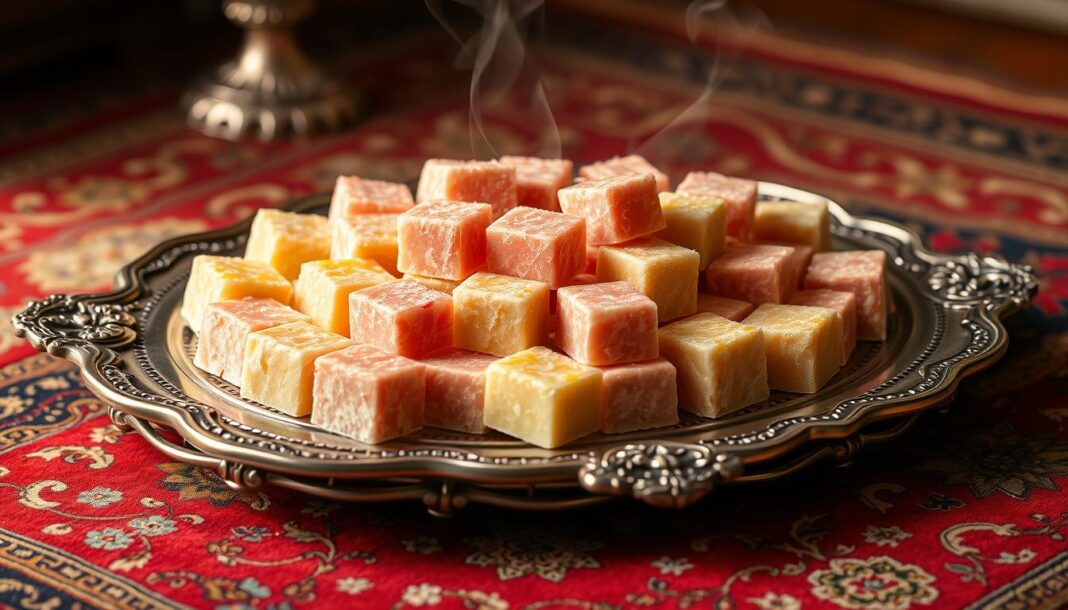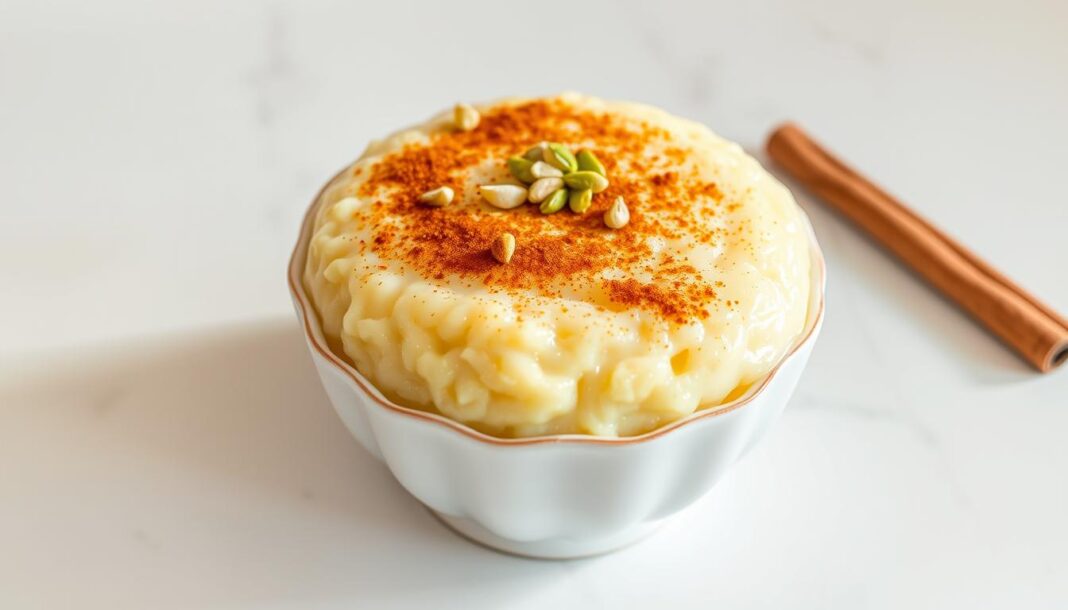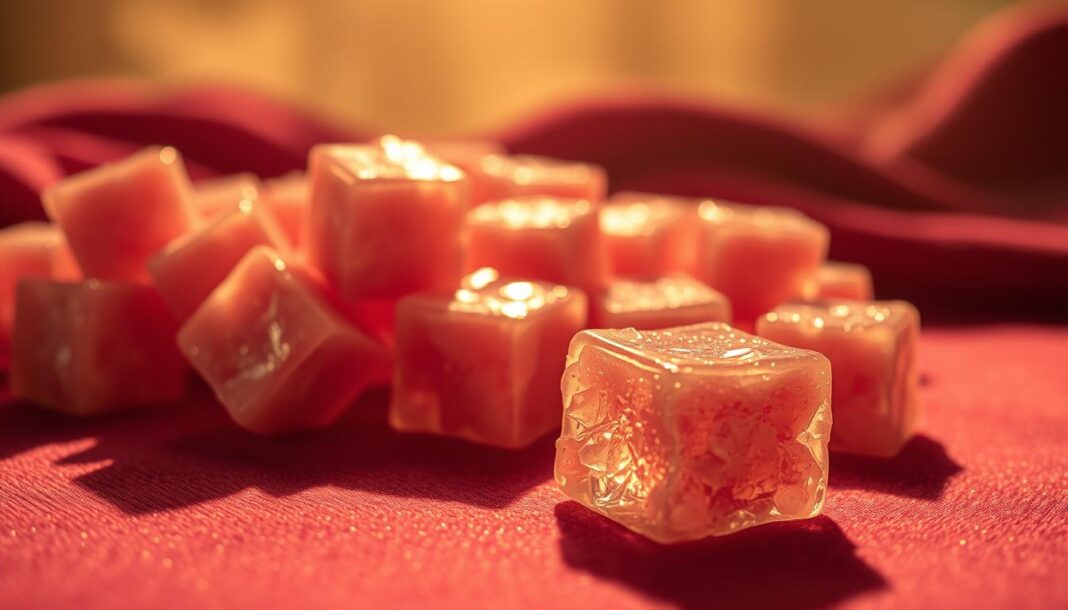We’re diving into the enchanting world of Turkish Delight, a confection that has captivated taste buds for centuries with its unique chewy texture and delicate flavors. This traditional Middle Eastern sweet has a rich history, having been originally used as a medicine in 10th-century apothecaries to treat sore throats. It gained popularity in the 1700s after being favored by a Turkish sultan.
The basic components of authentic Turkish Delight are surprisingly simple: sugar, starch, water, and flavorings. Yet, the process of creating this confection requires precision and patience. You can explore various flavors of Turkish Delight and even find recipes like the one on Historical Foods to make it at home.
Key Takeaways
- Understanding the history and cultural significance of Turkish Delight.
- Learning the basic components and process of making Turkish Delight.
- Exploring various flavors and recipes for homemade Turkish Delight.
- Discovering tips for serving and storing homemade Turkish Delight.
- Unraveling the science behind this iconic confection.
The Magical Origins of Narnia Candy
Turkish Delight, a confection with a rich history, plays a significant role in C.S. Lewis’s Narnia series, symbolizing both temptation and luxury. We explore the journey of this sweet treat from its origins to its appearance in Narnia.
From Turkish Delight to Narnia’s Enchanted Treat
The name “lokum” comes from the Arabic “rahat-ul hulküm,” meaning “comfort for the throat.” Originating possibly in Persia or the Ottoman Empire around the 15th century, Turkish Delight made its way to the West in the 19th century.
- The transformation of its recipe occurred in the 18th century with the use of refined sugar and cornstarch.
- It was introduced to England in 1861 as “Lumps of Delight,” later becoming known as “Turkish Delight.”
Why C.S. Lewis Featured This Sweet in His Chronicles
C.S. Lewis’s inclusion of Turkish Delight in his Narnia chronicles was significant, especially given the post-World War II sugar rationing in Britain, making it an ultimate luxury and a perfect food temptation for Edmund.
The cultural significance of Turkish Delight in the Narnia series is further emphasized by Lewis’s apparent interest in Turkish culture, as seen in his choice of “Aslan” (Turkish for “lion”) as the name for his divine character, highlighting the allure of this exotic delight.
What Makes Narnia Candy So Irresistible
We explore what makes Narnia Candy, or Turkish Delight, so irresistible to many. The allure of this confection lies in its unique combination of texture and flavor, creating a sensory experience that captivates the palate.
The Unique Texture and Flavor Profile
Turkish Delight is known for its distinctive texture, which is often described as being between jello, marshmallow, and soft taffy. This unique mouthfeel is achieved through the interaction of sugar and starch when heated to specific temperatures, creating a stable gel network that gives the candy its characteristic bounce and chew. The flavor profile of Turkish Delight is equally captivating, with traditional flavors such as rosewater providing a delicate floral note that complements the sweetness without overwhelming it.
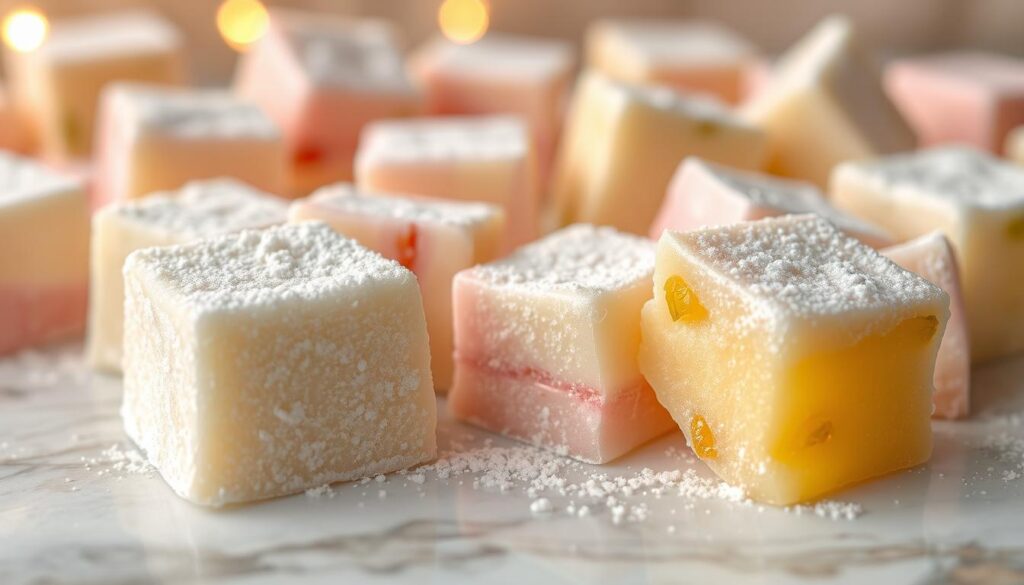
The delight in Turkish Delight is not just a name; it’s a description of the experience. The starch component mellows the intense sweetness of the sugar, allowing subtle flavor notes to shine through in a way that’s both balanced and sophisticated.
Traditional Ingredients and Their Significance
Traditional Turkish Delight relies on a relatively simple list of ingredients: sugar, water, cornstarch, citric acid, and flavorings. Each of these ingredients plays a crucial role in the final product’s structure and taste. For instance, the recipe for Turkish Delight involves carefully calibrating the sugar concentration and cooking temperature to create a confection that dissolves slowly in the mouth, releasing its flavors gradually.
| Ingredient | Role in Turkish Delight |
|---|---|
| Sugar | Provides sweetness and texture |
| Cornstarch | Helps create the gel network |
| Citric Acid | Balances the sweetness and enhances flavor |
| Flavorings (e.g., Rosewater) | Adds unique and subtle flavors |
This careful balance of ingredients and the science behind their interaction is what makes Turkish Delight, or Narnia Candy, such a beloved food treat.
Creating Your Own Narnia Candy at Home
Our journey into making Narnia Candy at home begins with understanding the essential ingredients and equipment needed for this traditional Turkish Delight recipe.
Essential Ingredients and Equipment
To make authentic Turkish Delight, you’ll need specific ingredients and equipment. The key ingredients include 350g of white sugar, 70g of cornstarch, 1.8g of citric acid, 175ml of water for the syrup, 500ml of water for the cornstarch mixture, 1½ teaspoons of rosewater, and 10 drops of red food coloring. For equipment, a heavy-bottomed pot, a candy thermometer, a heatproof spatula, and a suitable mold are essential.
| Ingredient | Quantity | Purpose |
|---|---|---|
| White Sugar | 350g | Provides sweetness and structure |
| Cornstarch | 70g | Thickens the mixture |
| Citric Acid | 1.8g | Helps achieve the right texture |
| Rosewater | 1½ teaspoons | Adds flavor |
Step-by-Step Preparation Instructions
Begin by combining sugar, citric acid, and water in a heavy-bottomed pan. Heat the mixture until it reaches 250°F, then gradually add the cornstarch mixture while continuously whisking. Continue cooking and stirring until the mixture thickens and reaches a medium-dark amber color. Remove from heat, add rosewater and food coloring, and pour into a prepared mold. Let it set at room temperature for at least 5 hours before cutting into pieces and dredging in a cornstarch-powdered sugar mixture.
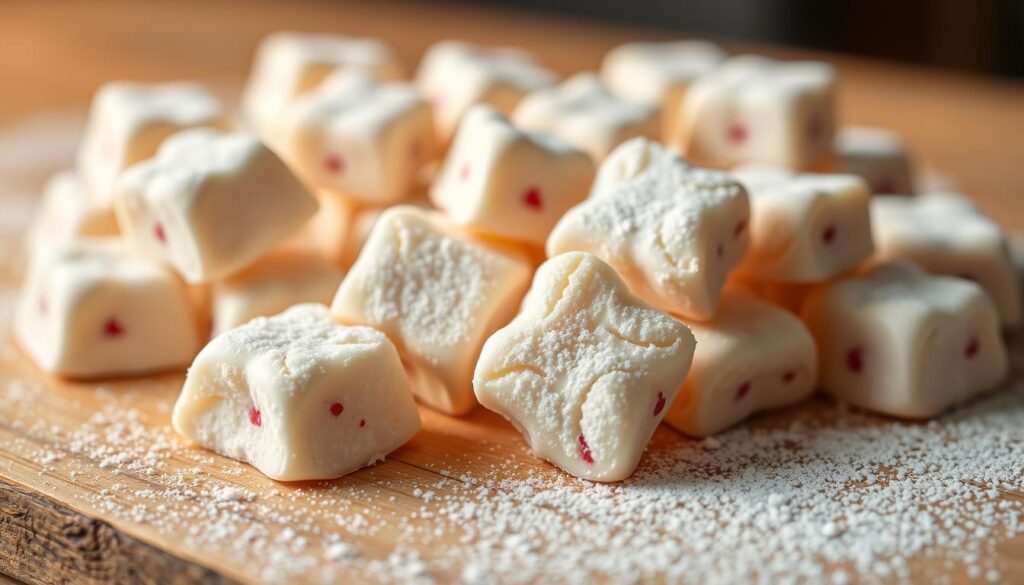
Troubleshooting Common Issues
Common issues with making Turkish Delight include candy that won’t set, lumpy texture, or overly hard candy. These problems can be avoided by ensuring the syrup reaches the correct temperature, whisking continuously when adding the cornstarch mixture, and not overcooking the Turkish Delight. By following this recipe carefully, you can achieve professional-quality results.
With patience and attention to detail, you can create delicious Narnia Candy at home, enjoying the process and the delightful Turkish Delight pieces that result from your efforts.
Serving and Storing Your Homemade Turkish Delight
Now that you’ve mastered the recipe for Turkish Delight, let’s explore the best practices for serving and storing this sweet treat. To maximize the experience, we recommend serving Turkish Delight with Turkish coffee and water on the side, a traditional combination in Turkey.
For optimal storage, keep your Turkish Delight in an airtight container, generously dusted with a cornstarch-powdered sugar mixture to prevent the pieces from sticking together. When stored properly, homemade Turkish Delight can last for several months in the refrigerator. Before serving, allow the pieces to come to room temperature to ensure the proper texture and release of flavors.
Experiment with different serving methods, such as sandwiching pieces between plain biscuits like Biscoff, to create a delightful textural contrast. With these tips, you’ll be able to enjoy your homemade Turkish Delight to its fullest potential.
